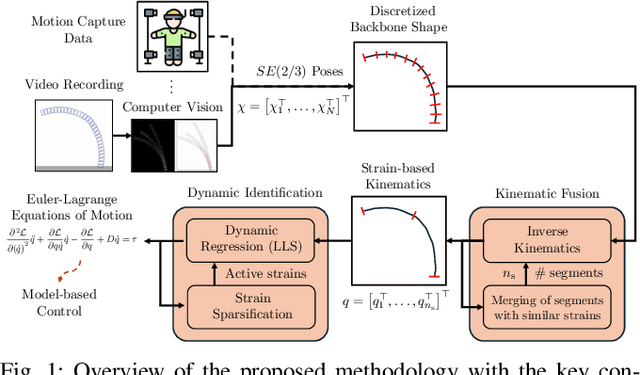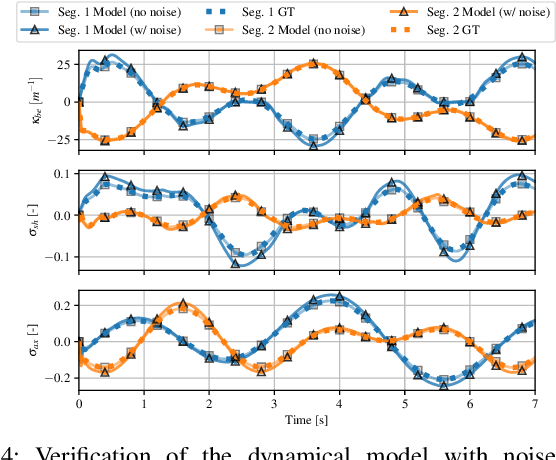Jingyue Liu
Learning Low-Dimensional Strain Models of Soft Robots by Looking at the Evolution of Their Shape with Application to Model-Based Control
Oct 31, 2024



Abstract:Obtaining dynamic models of continuum soft robots is central to the analysis and control of soft robots, and researchers have devoted much attention to the challenge of proposing both data-driven and first-principle solutions. Both avenues have, however, shown their limitations; the former lacks structure and performs poorly outside training data, while the latter requires significant simplifications and extensive expert knowledge to be used in practice. This paper introduces a streamlined method for learning low-dimensional, physics-based models that are both accurate and easy to interpret. We start with an algorithm that uses image data (i.e., shape evolutions) to determine the minimal necessary segments for describing a soft robot's movement. Following this, we apply a dynamic regression and strain sparsification algorithm to identify relevant strains and define the model's dynamics. We validate our approach through simulations with various planar soft manipulators, comparing its performance against other learning strategies, showing that our models are both computationally efficient and 25x more accurate on out-of-training distribution inputs. Finally, we demonstrate that thanks to the capability of the method of generating physically compatible models, the learned models can be straightforwardly combined with model-based control policies.
Physics-informed Neural Networks to Model and Control Robots: a Theoretical and Experimental Investigation
May 09, 2023Abstract:Physics-inspired neural networks are proven to be an effective modeling method by giving more physically plausible results with less data dependency. However, their application in robotics is limited due to the non-conservative nature of robot dynamics and the difficulty in friction modeling. Moreover, these physics-inspired neural networks do not account for complex input matrices, such as those found in underactuated soft robots. This paper solves these problems by extending Lagrangian and Hamiltonian neural networks by including dissipation and a simplified input matrix. Additionally, the loss function is processed using the Runge-Kutta algorithm, circumventing the inaccuracies and environmental susceptibility inherent in direct acceleration measurements. First, the effectiveness of the proposed method is validated via simulations of soft and rigid robots. Then, the proposed approach is validated experimentally in a tendon-driven soft robot and a Panda robot. The simulations and experimental results show that the modified neural networks can model different robots while the learned model enables decent anticipatory control.
 Add to Chrome
Add to Chrome Add to Firefox
Add to Firefox Add to Edge
Add to Edge